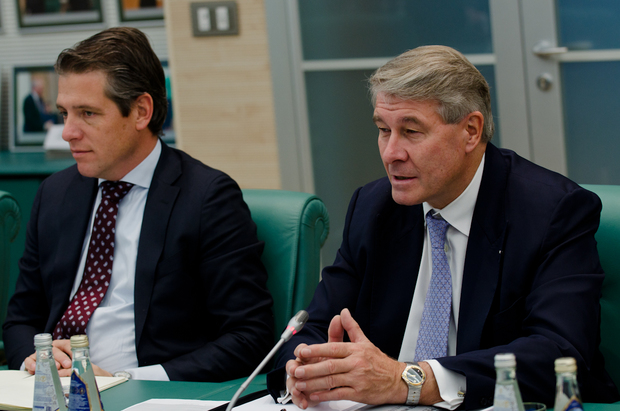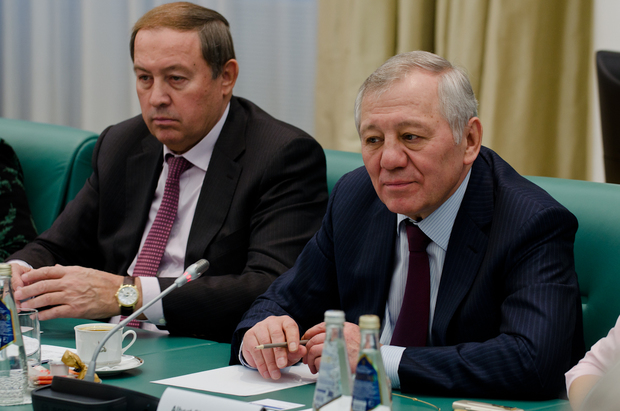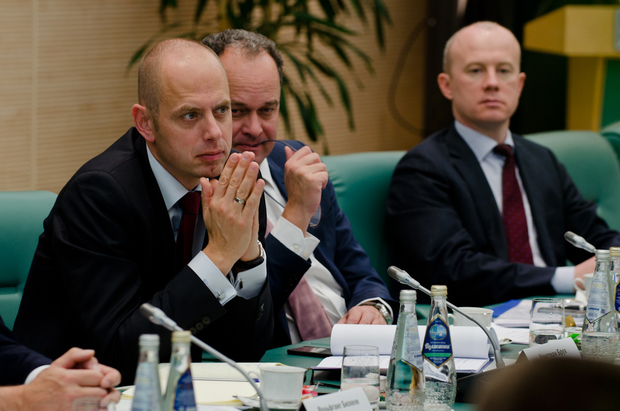TAIF Group offers German Linde to participate in gas processing project
The heads of TAIF and Linde holdings held a meeting to discuss new and current investment projects
More than six months later, the heads of large German company Linde headed by the chairperson of the Executive Board Wolfgang Buechele once again came to Kazan to discuss with its strategic partner, TAIF Group, the ongoing projects on TAIF-NK and Nizhnekamskneftekhim and to plan a new vector of joint work identifying the development of the petrochemical industry not only in Tatarstan but also in Russia. The correspondent of Realnoe Vremya found out the details of the negotiations.
To reach the design capacity with α-SABLIN® technology
The German partner is involved in the implementation of several ambitious projects of TAIF. Perhaps, the key one – the completed work of a hydrogen plant for Heavy Residue Conversion Complex of TAIF-NK, which is under construction now. Director General of TAIF Albert Shigabutdinov expressed gratitude to the partners for that the hydrogen plant was implemented on time. In Russia, there are two such plants. One of them is located in Togliatti at KuibyshevAzot JSC with a capacity of 120 thousand cubic meters/hour for hydrogen, and the second one is in Nizhnekamsk at TAIF-NK JSC with a production capacity of 222,4 thousand cubic meters/hour of hydrogen.
The partners discussed the results of implementation of α-SABLIN® technology with the modernization of production of linear alpha olefins (LAOs). At the end of August, Nizhnekamskneftekhim officially launched the plant for the production of LAOs. The capacity of the plant is 37,5 thousand tonnes per year. Nizhnekamskneftekhim is the only manufacturer of alpha olefins in Russia. In 2012, Nizhnekamskneftekhim signed a license agreement with Linde for α-SABLIN® technology, which is laid in the basis of the modernized production.

The new technology allows to get mainly light hydrocarbon fractions of alpha-olefins: 1-butene and 1-hexene. They will be used at a factory of plastics for the production of complex copolymer grades of polyethylene instead of the imported raw materials. As Wolfgang Buechele said, α-SABLIN® technology is very economical, has a high selectivity and is effective in terms of cost reduction. However, Albert Shigabutdinov noted, the upgraded plant has not reached the designed capacity yet and it is necessary to analyze. 'We need to know exactly what problems we have,' he addressed to the German holding company.
High demand with little supply on the market
The next project of Nizhnekamskneftekhim is a promising ethylene complex at 1,200 thousand tonnes, which is now seeking for a general contractor. The complex will produce a variety of raw materials suitable for further processing. For example, at 600 thousand tonnes of ethylene of the first stage there will be about 270 thousand tonnes of benzene. Of course, the company is interested in its processing. And benzene is a necessary raw material for the production of isocyanates.
The most widely used in the industry isocyanates are of two kinds: toluene diisocyanate (TDI) and methylene diphenyl diisocyanate (MDI). TDI is used for the production of resilient polyurethane foams, and in the future – foam rubber, different seats, mattresses, paints, coatings, sealants, adhesives. MDI is necessary for the production of rigid polyurethane foams. It has high heat-insulating properties, which determine its main use: building heat-insulation, refrigeration equipment, pipe insulation.

However, along with a high level of demand, the Russian market of isocyanates is characterized by low supply, as Russia does not have its own manufacturing capacities of isocyanates. In other words, the new production will allow to fully provide domestic consumption with domestic product. Now it is up to the technology. Among the world leaders in the production of components for polyurethane — German company BASF and Covestro, Chinese company Wanhua and American Huntsman and Dow Chemical. TAIF turned to Linda with the offer to mediate in talks with the big players for the subsequent launch of joint production. On what one of the most influential people in the international industry Wolfgang Buechele, once managing a plant for the production of MDI and TDI in Hungary, said he was ready to help in this matter.

Then the parties discussed far-reaching plans for the development of Kazanorgsintez. 'We are negotiating with Gazprom on the production of ethylene from butane at 28 billion cubic meters of gas,' lifted the veil in the strategic development plans of the chemical giant Albert Shigabutdinov, and added that if Linde sees itself in this project, it can join its implementation. And, of course, the holding, which strength is gas processing, took it more than positively, reminding about the upcoming localization in Saint Petersburg of the production of heat transfer units for plants producing liquefied natural gas. Wolfgang Buechele specified to Realnoe Vremya that the project is a short-term. 'We want to start the production as early as possible. Next year, at least. We are going to produce equipment for the production of liquefied natural gas, which is currently already under construction,' said the head of Linde.
Realnoe Vremya will follow current and upcoming projects of the two diversified holdings.
Reference
Linde company, established in 1878, consists of three divisions: Linde Gases and Linde Engineering (two core divisions) and other activities (logistics company Gist). The largest division, Gases, has three segments: EMEA (Europe,Middle East and Africa), Asia/Pacific and the Americas. These segments are further subdivided into nine Regional Business Units (RBUs). In addition, Linde has established five Global Governance Centres (GGCs) for the Gases Division which are centrally managed and operate across the regions: GGC Merchant & Packaged Gases (liquefied gases and cylinder gas), GGC Electronics (electronic gases), GGC Healthcare, GGC Operations and GGC Deliver. The Group has also set up the Group-wide function Opportunity & Project Development in order to take better advantage of business opportunities.
Operating profit of the Linde group in 2015 amounted to 4.1 billion euros. Sales of regional divisions in 2015: Europe and the Middle East — 6.077 billion euros, the Asia-Pacific region – 4.162 billion euros, America – 5.183 billion euros.
The Linde group has a leading position in developing technologies with the possibility of implementing EPC projects. It gives an advantage over the other gas companies. Engineering developments with ownership right and own experience of operation of Linde are used for the design of reliable systems. Symbiosis in both directions: Linde Gases is the biggest customer of Linde Engineering.
Dr Wolfgang Buechele was born in 1959 in Geislingen, Germany. Since last year Dr Buechele heads the Eastern Committee of German economy, which is the collective body of a number of key associations of business unions in Germany: the Federation of German Industry (BDI), the Association of German Banks (BdB), the German Insurance Association (GDV), the Foreign Trade Association of German Retail Trade (AVE), the German Confederation of Skilled Crafts (ZDH). Since 2014 he is the CEO of Linde AG in Munich. From 2012 to 2014 he was the President and CEO of Kemira Oyj, Helsinki, Finland. From 2009 to 2011, he was a member of the Board and the CEO of BorsodChem Zrt., Budapest, Hungary. In 2008, he was a Project Advisor to the Blackstone Group International Partners LLP, London, UK. From 1987 to 2007 he worked at the largest chemical concern BASF AG, Ludwigshafen.